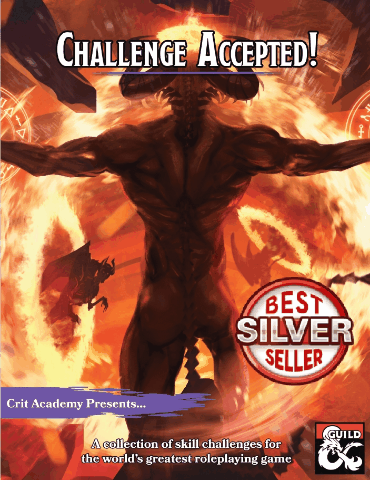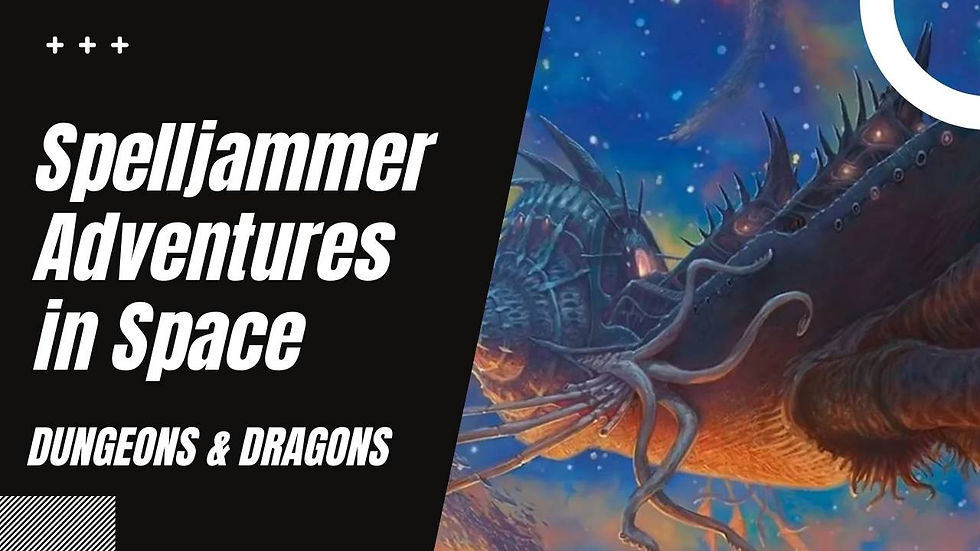The Ultimate D&D Monster Book! Monster Manual Expanded
- Justin Handlin

- May 10, 2021
- 6 min read
Let's be honest. When it comes to Dungeons and Dragons Dungeon Masters can never have enough monster variety in our games. This often means we have to create them ourselves or scour the internet for well-balanced creatures. Fortunately, there are some amazing content creators out there that can make content as good as or in some cases better than even the official content. The legendary Dragonix is one such creator. His monsters are superb, balanced, and creative. The first in his best-selling trilogy is a great starting point for your DM Toolbox.

Monster Manual Expanded is a 330-page source of content that supplements the Monster Manual. It aims to provide Dungeon Masters more options and flexibility in designing adventures and dressing up their dungeons with a wider variety of creatures and characters that are based on the Monster Manual. Finally, it also adds variants that provide a nostalgic and classic feel that DMs experienced with the older editions are probably familiar with.
In total, there are over 470 creature stat blocks in this book at the Dungeon Master's disposal!
Capes & Crooks a 5e Superhero RPG playtest streams bi-weekly on Fridays. This is our upcoming Kickstarter Project. To sign up for notifications on this project visit our website!
Character Concept:
Lanoren on Reddit
Battle Butler
Butler to support a noble PC ally. Mastermind 3/Lore Bard X to give them huge bonuses constantly with the help action and inspiration. Cutting words if they dare attack your master. Prestidigitation and Mending make chores a breeze. Adding in cooking tools proficiency for meals and you're a fantastic Battle Butler.
Monster Variant:
Immoleth
Origin: Fire Elemental
When a collection of demons is slain and their spirits falls back into the Abyss, occasionally they land in the same location atop the flames of the nine hells. The heat of the fire causes their spirits to fuse into a single entity. This event is extremely unpredictable, but the result is a single terrifying infernal demon forged from the spirits of many known as an Immolith. Few demons despise the living more than immoliths. Thus, they are often encountered in the company of powerful undead creatures such as liches and vampires.
New Features
Vigor of the Grave.(Recharges after a Short or Long Rest) If damage reduces the immolith to 0 hit points, it must make a Constitution saving throw with a DC of 5 + the damage taken, unless the damage is cold or from a critical hit. On a success, the immolith drops to 1 hit point instead.
Flame of the Nine Hells (Recharge 5-6). The immolith emits a blasting wave of fire. Each creature within 15 feet of the immolith must succeed on a DC 13 Dexterity saving throw, taking 14 (4d6) fire
damage on a failed save, or half as much damage on a successful one. If a creature fails its saving throw, it ignites. Until a creature takes an action to douse the fire, the target takes 5 (1d10) fire damage at the start of each of its turns.
Deathfire Curse. As a bonus action, the Immoleth targets a creature it can see within 30 feet of it. The target is cursed for 1 minute. The curse ends early if the target dies, the immoleth dies, or it is incapacitated. Until the curse ends, the target’s speed is halved, they lose any resistances to fire damage and gain vulnerability against fire damage. If the target has immunity to fire they are immune to this effect.
Encounter:
Ritual of the Nine Hells
A combat encountered tied to a dark ritual to summon a pit fiend.
The cultists aim to summon a pit fiend from the Nine Hells to wreak havoc on material realm. The appearance of the magistrate and the PCs has rushed their plan. Even so, they are nearly done they have formed a magical circle with a complicated glyph of summoning with a bowl of blood at its center.
Keep track of each time a minion spends an action to chant. When that count reaches sixteen, the ritual is completed and a pit fiend (MM 77) appears. It doesn’t bother fighting, instead heading to the surface and flying off to wreak carnage. All creatures must save against its fear aura, the cultists and its allies have advantage.
If the PCs defeat all four lackeys before they can chant a total of twelve times, the monstrous visage of a pit fiend appears in the center of the black rift, howling the PCs’ names in fury as the portal closes and disappears.
A character who succeeds on a DC 14 Intelligence (Arcana) check can tell how close the ritual is to completion (how many actions are left to be performed). A character who succeeds a DC 20 Intelligence (Religion) check learns the ritual can be slowed by tipping over the blood bowl adding to the number of chants needed to summon the fiend by four.
Magic Item: Sapphire of the Skye Fury Rune
Wondrous item, very rare (requires attunement)
This cloud shaped stone measures about two inches on each side and half an inch thick with a skye rune carved into it . The gems is translucent and radiates a faint sky blue light from its core. The sapphire has the following properties, which work only while it’s on your person.
Gust. You can cast the gust cantrip(XGtE).
Wind’s Ally. You have advantage on all saves against wind effects, magical or otherwise.
Wind Tamer. You can cast feather fall on yourself. You can’t use this feature again until the next dawn.
Gift of Wind. You can transfer the sapphire’s magic to a nonmagical item-a weapon or a suit of armor by tracing the skye rune there with your finger. The transfer takes 8 hours of work that requires the two items to be within 5 feet of each other. At the end, the sapphire is destroyed, and the rune appears in a sky blue on the chosen item, which gains a benefit based on its form:
Weapon. The weapon is now a very rare magic weapon that requires attunement. Fury of a high storm surrounds the weapon, occasionally lashing out at your enemy. When you roll a critical hit, make another weapon attack as part of the same action.
Armor. The piece of armor is now a very rare magic item that requires attunement. The armor acquires 1d4 charges. You can use an action to spend two charges to create a funnel of wind surrounding you with a 5-foot radius until the end of your next turn. The funnel moves with you. Each creature within its area must make a DC 14 Strength saving throw. A creature takes 3d8 bludgeoning damage on a failed save, or half as much on a successful one.
The strong wind keeps fog, smoke and other gases at bay. Small or smaller flying creatures or objects can’t pass through the wall. Loose, lightweight materials brought into the wall fly upward. Arrows, bolts, and other ordinary projectiles launched at targets within the wind funnel or behind make attacks at a disadvantage. Creatures in gaseous form can’t pass through it.
The armor regains all expended charges daily at dawn. If you expend the armor’s last charges, roll a d20. On a 1, the armor rune is consumed and the armor becomes mundane.
Dungeon Master Tip:
Restricting Class Access
Without changing the way a class functions, you can root it more firmly in the world by associating the class with a particular race or culture.(wotc did this with the bladesinger)
For example, you might decide that bards, sorcerers, warlocks, and wizards represent the magical traditions of four different races or cultures. The bardic colleges might be closed to everyone except elves, dragonborn might be the only creatures capable of becoming
sorcerers, and all warlocks in your world might be human. You could break that down still further: bards of the College of Lore could be high elves, and bards of the College of War could be wood elves. Gnomes discovered the school of illusion, so all wizards who specialize in that school are gnomes. Different human cultures produce warlocks with different pacts, and so on. Similarly, different cleric domains might reflect entirely separate religions associated with different races or cultures.
You decide how flexible you want to be in allowing a player character to break these restrictions. Can a half-elf live among the elves and study their bardic traditions? Can a dwarf stumble into a warlock pact despite having no connection to a culture that normally produces warlocks? As always, it's better to say yes and use the player's desire as an opportunity to develop the character's story and that of your world, rather than shutting down possibilities.
(dnd4e DMG)
Player Tip: Don’t be a Dick
Personal Decisions (XGtE)
Your character’s life takes a particular course depending on the choices you make for the character’s background and class.
Why did your character become (Insert Background here)
This is a very defining characteristic for your character, so it's important to understand WHY they choose that path. XGtE gives some great examples.
Examples:
I became a charlatan because after a charlatan fleeced my family, I decided to learn the trade so I would never be fooled by such deception again.
I became an entertainer because I saw a bard perform once, and I knew from that moment on what I was born to do.
I became a criminal because a parent or relative taught me my criminal specialty to prepare me for the family business.
Not only do these build character, but they give a lot of play space for the DM.
Make sure to subscribe to our show at www.critacademy.com, and Youtube so we can help you on your future adventures as well as a chance to win cool prizes each and every week. Make sure to check out our fellowship members as well. Or support us on Patreon and get weekly Dungeons and Dragons loot!















Comments